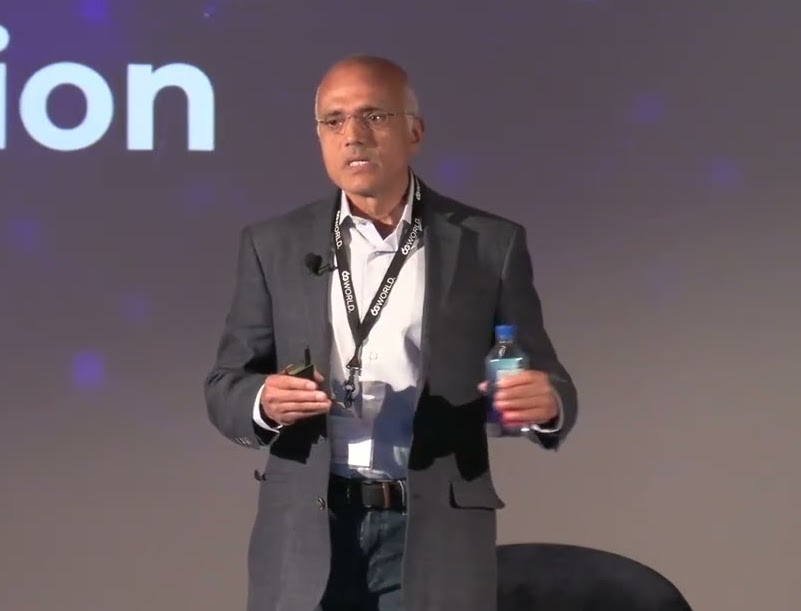Milind Kulkarni has been around the telecoms industry long enough to understand how mobile technology goes from a simple idea to a groundbreaking solution.
With almost four decades of experience, Kulkarni worked for companies like Motorola, Boeing, and Nokia before joining InterDigital in 2022, where he is Vice President and Head of the company’s Wireless Labs.
In this interview with 6GWorld, the expert shares his views on the journey towards 6G, immersive communications, AI, machine learning, and some of his work at InterDigital.
6GWorld: Let’s start with some of your current work. What 6G or Beyond 5G topic areas is InterDigital focusing on now?
Several areas interest us, and we see 5G-Advanced taking shape with release 18 almost at its peak and the release 19 workshop coming up very soon. We’re starting to see an interest in 3GPPP on the metaverse, services about video conferencing that will use multimodal inputs, audio, video, haptics, kinesthetics, and so forth to make the metaverse more immersive.
So these are all the areas that are coming in as use cases. When you think about them, you must consider how they change the user experience.
First, we need to replace the traditional method of using key performance indicators. Instead of going from the quality of service, you go to the quality of experience. Then you define the use cases and the new KPIs associated with them. What are the technology enablers that we have to change and why?
These applications will require higher data throughput. They’ll require lower latency, so you must put computing closer to the edge. With this comes more intelligence at the edge and in the RAN so that you can use tools like machine learning (ML) to be more efficient.
So, where does that lead us? We’re focused on how to apply AI and ML on the RAN side, as well as on the core network side; we’re looking at how we continue to improve video compression and bring that into one of the 3GPPP working groups, and with the new spectrum frequencies, also how we do localisation and sensing.
6GWorld: You mentioned AI and ML. AI has been a topic for telecommunications for a while, but it hit the general public last year. Since that’s an area that InterDigital covers, what role do you think AI will play a role in 2023 for telecommunications?
There is not a day that goes by without me hearing some fashion of AI/ML news, whether on LinkedIn or listening to the news.
AI and ML have wonderful capabilities. We also must recognise that they’re a tool that can be applied to solve certain problems. But if you require a screwdriver to do some work, you cannot use a hammer for it, right? And I kind of think about AI/ML in the same sense.
Not all problems in telecommunications can be solved using AI/ML. But there are specific problems that can.
We recently published a paper with ABI research which addresses how ML has improved the OSS/BSS areas. It’s a service-based application from which you can collect data. And there’s a lot of data there. You can train the models, make predictions, and it works very nicely.
If you go down a little bit deeper into the radio access networks, things start to get a little bit more difficult to implement. There are efforts going on in 3GPP in three different features: channel state information, beam management and positioning to figure out how best AI/ML tools can be used and what benefits you get.
There are a lot of challenges, and I think it’ll take some time to figure all that out. But I’m convinced that there are some areas where AI/ML can be implemented to save power, therefore save energy, improve spectral efficiency, etc.
6GWorld: One surprise from MWC23 is how much talked about 6G was, especially considering that we’re still several years away from commercial rollout. What do you make of this 6G presence early in the game?
Yeah, I have noticed that as well. I also realised that the operators are concerned because they have made a lot of investments in 5G. There was an architectural change from 4G to 5G, which is still getting rolled out and deployed, and I’m specifically referring to the standalone 5G networks.
So, there’s a natural concern that we might be moving too fast towards 6G. But let’s look at it from the other angle. Some of the 6G technologies displayed in Barcelona require a long time to mature and an ecosystem to develop around them.
Some of the demonstrations were related to sub-terahertz. The first millimetre wave paper came out in 2011. If you look at how the millimetre wave deployment is taking shape, it’s still in its infancy.
Here we are, ten years later, working on that technology. I see something similar happening with 6G. If we start working now, some areas will mature over the next seven to ten years. And if we don’t do that now, it’ll be further delayed.
We do see some real-life use cases where these technology enablers are required. So, in my opinion, it’s not too early to start thinking about how to bring that into the networks and about being aware that these technologies can help people improve their lives.
6GWorld: One of the 6G use cases is immersive communications such as AR, VR, XR or even volumetric video. What are the specific challenges we need to overcome today to enable a more immersive technology in 6G?
I was part of a panel session where we discussed XR, AI and 5G. Snapchat presented some interesting data on how people use AR features, and we had a discussion with McLaren and Cisco about how Formula One race cars are now using all the immersive experiences.
We can say that today’s technologies support these immersive experiences, but some limitations can be improved. These experiences need to be scaled up, but when we start doing it, we run into problems like throughput latency or jitter.
Also, the devices available today are clunky. They’re not so easy to use. There are some changes required in that space as well. And when you look at content creation, you start asking how you create XR, AR, and VR experiences.
And, of course, at the end of the day, we have to make it low-cost; otherwise, the adoption will be very low.

Journalist since eight years old, when I would read the newspaper out loud and pretend it was a radio show. Based in São Paulo, I have worked for Brazilian websites as reporter and editor before joining 6GWorld





